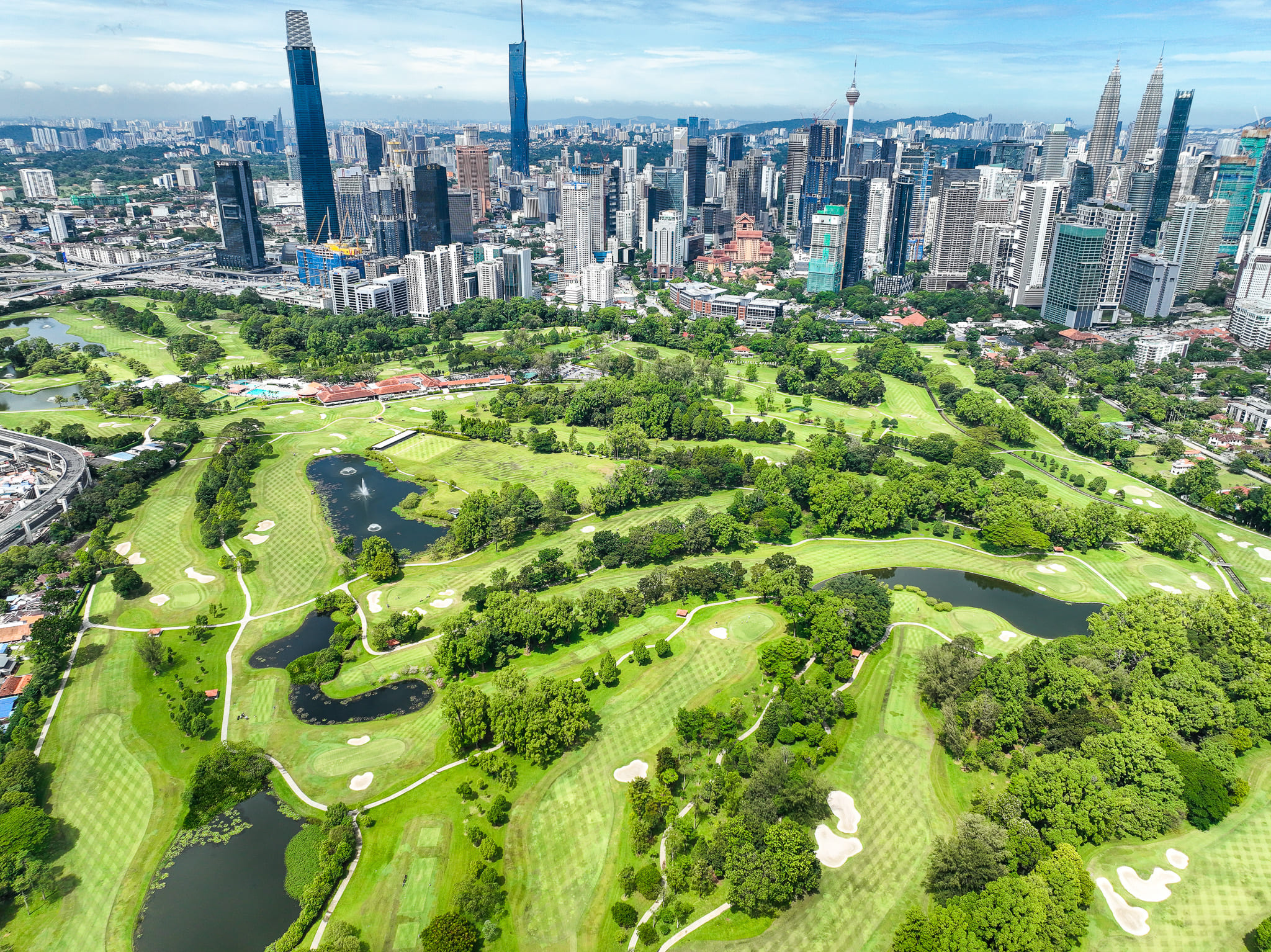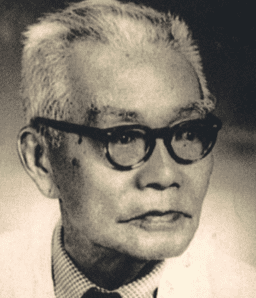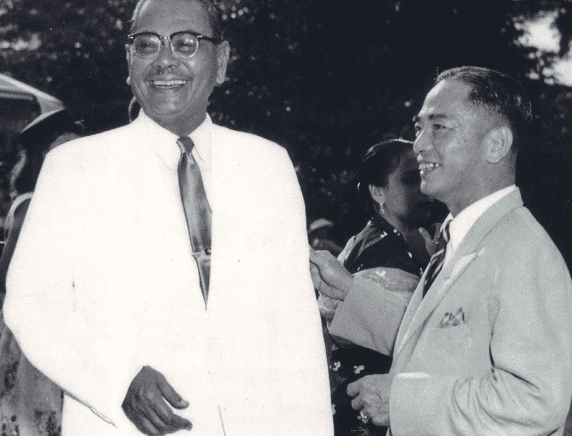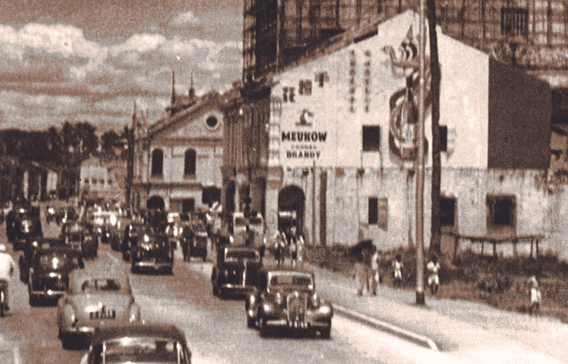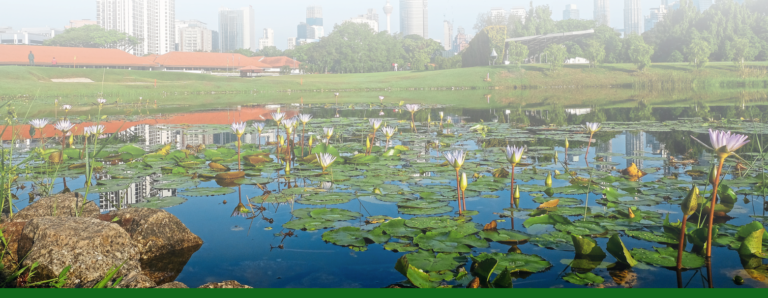At the birth of the lusty infant on 24 June 1893, delivered into the golfing world mainly through the painstaking efforts of the Glassfords and the Meikles, there were 30 eager founder Members, all Europeans. With the opening of the Petaling Hills course on 21 August 1893 the membership rose steadily to about 50 the following year.
Choo Kia Peng
By 1920, the numbers swelled to nearly 300, in proportion to the growth of the European community in Selangor. With the advent of the First World War, the increase in membership was dampened somewhat as some potential Members had to return home to join the armed forces. Malaya then was not actively engaged in that conflict. The War also restricted the flow of newcomers. Up till then all the Members were Europeans except for one or two, among whom was Choo Kia Peng who had been a Member since 1909.
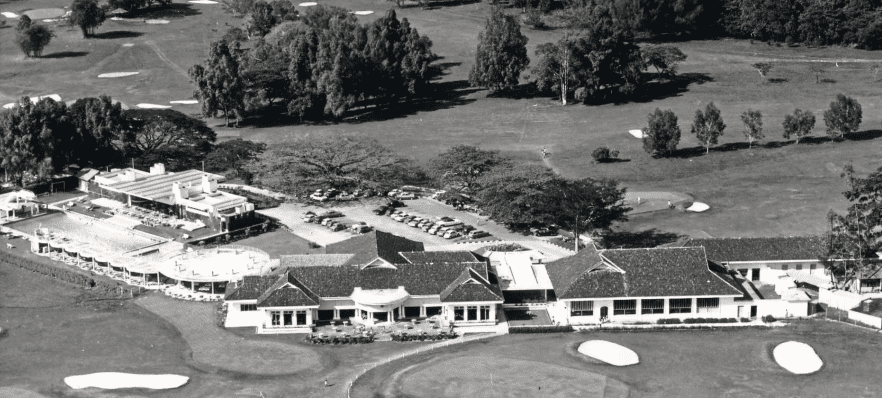 The clubhouse as it then was before the War
The clubhouse as it then was before the War
The Years of Expansion
The years following the relocation to the present site can be regarded as the years of expansion, where the Club literally expanded from a modest 80-acre nine-hole course to a 350-acre real estate of vast potential. A decade on, by 1930, the membership had increased to 600. With the construction of additional facilities for lawn tennis and swimming, it doubled yet again to some 1,200 in 1940 before the onset of the Second World War.
The Tunku with Lee Hau Shik
Rehabilitation and Consolidation
The Japanese military had been in possession of the Club for about three years and eight months, during which time they wreaked wanton destruction. It was not until the AGM of April 1948 that The Committee was able to report that at the end of January that year “rehabilitation is now practically complete”
Membership at that time had declined to slightly under 1,000 but a steady increase over the next five years saw that figure rise to nearly 1,800 by January 1953.
Loo Yew Hoi, who is one of the best and keenest Asian players in the club
The Transition Period
Up until the mid-1950’s, the Members were almost exclusively Europeans, with the exception of a few Asian gentlemen of prominence. Special mention was made in Twelve Under Fours, of Choo Kia Peng who was instrumental in having successfully negotiated for the Club’s acquisition of the mining leases on our present site. There were other men of stature with the likes of Cambridge-trained Lee Hau Shik who became a leading tin miner and later Malaya’s first Finance Minister after Merdeka in 1957, and Raja Musa bin Raja Bot, the first Malay lawyer and first Malay judge of the Federated Malay States Supreme Court in 1938.
This small band of local gentry also included Raja Uda bin Raja Mohamed the first Governor of Penang, Khoo Keng Hooi, Khoo Teik Ee and Loo Yew Hoi. They were individuals who enjoyed socialising with the Europeans either through friendships nurtured when they were in Britain or through business dealings at work.
Past Captain Henry Liu reminisced: “If you went to the Club after 7.30 pm there would be lots of Europeans at the bar enjoying a drink. Their life was in the Club, their wives would be there and their children swimming in the pool. By 8 or 9 o’clock they would still be there, and some die-hards even by 10 pm when those Members still remaining, known as the hard core, were required to sign the late book. The traditional Men’s Bar was very popular.
Malaya was fortunate to bounce back from the ravages of the War – thanks ironically to another war – the Korean War in the early 1950’s. Rubber and tin, of which Malaya was the world’s major supplier, enjoyed an unprecedented boom. The commodity prices kept on soaring, thereby boosting many a Malayan’s coffer. As the locals became more affluent, their self-confidence grew and their desire to climb the social ladder in search of a change in lifestyle was clearly manifested by the burgeoning membership waiting lists of every prestigious club in the country.
The astute Selangor Golf Club Committee actually foresaw this scenario prior to the economic boom and even formed an ad hoc sub-committee to address the issue of an impending “invasion” of locals seeking membership. A comprehensive memorandum presented at the Committee meeting on 8th May 1947 is reproduced below in its entirety:
As regards Asiatic membership of this Club, there is no question of racial discrimination. For in the past Asiatics have been admitted to membership and today there is a number of Asiatics who are welcomed as members of the Club. But in each case the Asiatic has been a gentleman of some prominence in his community, he has been able to speak English fluently and was already on terms of friendship with a number of members.
In order to consider whether limitations such as these should be widened and Asiatics, generally, be admitted to membership of the Club it is necessary to appreciate what the Club is and has been.
The Club was originally formed by Europeans for Europeans: in those early days Asiatics did not play golf. Out of the original foundation at the Petaling Course has been built up the magnificent organisation which we now have. The Club provides golf, tennis, a swimming pool and social amenities not merely for its members, who are men, but also for their wives and children, for other ladies and their children and for members of the services and their families. Out of a small club merely providing amenities for its members there has been evolved an institution rendering service to the European community of Selangor.
All this has been done with money provided by Europeans and it has been done with the object that the Club shall be an European Club. That the Club should be internationalised is an idea of recent origin.
Let us consider the effect of internationalisation. There is a very large field of Asiatics, most desirable gentlemen, who would be anxious to join the Club for the amenities which it offers. This field is considerably greater than that from which our membership is now drawn. By opening the door to Asiatics generally the Club would be overwhelmed by a flood of new membership and very quickly the time would come when we would have to close our doors to any new members.
In the result the Club would no longer be able to fulfil the functions for which it exists, namely the service of Europeans in and coming to Selangor.
It must be the view of everybody knowing the condition of the Club that the present source of new membership, namely Europeans arriving in Selangor, is more than sufficient to fulfil the requirements of the Club in this direction and to absorb all the facilities and amenities which the Club can offer. We must think not only of ourselves but of these newcomers and of future generations.
This Club is our heritage and we, the present members, hold this heritage not merely as beneficiaries from our predecessors, but also as trustees for future generations of Europeans coming to Selangor. It is our duty to see that the amenities and facilities now available to us shall be available to these future generations. To open the door of membership to Asiatics generally would be to close the door against these future generations and to fail in our trust.”
After a very full discussion on the matter, the Committee decided to adopt the memorandum as expressing some of the reasons why internationalisation was not a feasible proposition. What the Committee did not foresee was that ten years later, on 31 August 1957 Malaya would have attained independence and in that event, the whole essence on which their findings were based would have been rendered extraneous. Be that as it may, it is commendable that that Committee had acted in the best interest of the membership in jealously guarding the Club’s fine heritage which they obviously cherished.
As the 1950’s wore on, however, the resolve of the advocates of the memorandum gradually diminished due to the retirement or repatriation of some, coupled with perhaps a change of heart, in view of the palpable winds of political change that swept the country. In no small part due to the efforts of Jimmy Ross, a Committee member (later to become Club President in 1957) who had disagreed with the decision adopted by his peers, the Club admitted 59 Asians with a good mix of professionals and high-ranking government officials between 1955 and 1957.
Harry Matheson, a former Club Captain (and Club Champion) who was featured in an absorbing article written by Han K. Hoh in the October 2007 Circular, wrote in reply to our letter that “…. After Merdeka in 1957, increasing number of applications for membership of the Club were received from Asians. This was at a time when expats in increasing members were retiring or being repatriated. Fortunately, there were two or three Malaysian Members on the Committee who were able to screen applicants to ensure that incoming new Members would be generally welcomed by and agreeable to the Members of the Club.”
Such was the deep concern of the men at the helm that the Club might be infiltrated by undesirable individuals!
The closure of two other golf clubs in the vicinity also contributed to an influx of Asians joining the SGC. The Sulaiman Club which had a 9-hole course in Cheras, with 90 percent Asian membership wound up its operations in 1952. The members brought along its net assets and with that, partly funded the construction of our 9-hole par 3 Suleiman Course which bears its name to this day. The Kuala Lumpur International Sports Club too, had a 9-hole course, in the Lake Gardens, but as most of the members were Europeans save for a few, amongst whom were two distinguished gentlemen George Y.L. Lee (son of Lee Hau Shik) and his father-in-law B.G. Chua (later to become the Club’s first Asian President), their inclusion in the Club membership in 1956, did not materially affect the Asian element.

